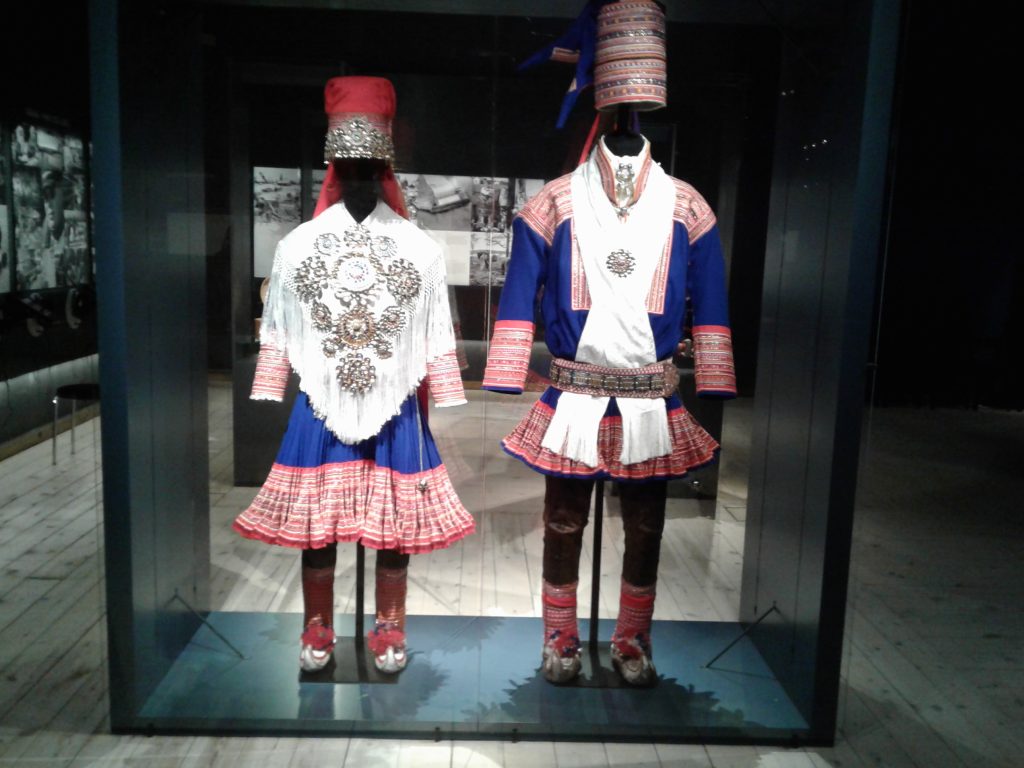
I carried the Alaska flag with me as I traveled through Finland during the last week of October. I was there at the invitation of the U.S. Embassy, presenting all over the country in a speaking program titled “Arctic Dialogues: Building Cultural Bridges.”

If you look at Earth from the top down, with the North Pole in the center of the image, you’ll see that Finland and Alaska lie directly over the pole from each other. We’re polar neighbors. (And we’d be next-door neighbors, too, if it weren’t for the entire mass of Russia separating us.) Beyond latitude, the northernmost people in Alaska and in Finland share much in common. Discussing our similarities and unique qualities filled my days as I presented to audiences for five straight days. I read to kindergartners in Helsinki and engaged in roundtable discussion with some of Finland’s leading experts engaged in arts, science, and indigenous culture. I presented slice-of-life images about Alaska to teenagers in several high schools and exchanged ideas and inspiration in a panel of Finnish authors. My keynote talk for adults was titled “Who Owns the Stories?” addressing intellectual property rights issues surrounding creative works about and by indigenous people.
As a tourist, I learned about Finland’s war-torn past and emergence into independence just a century ago. I took a ferry to an island near the Helsinki harbor. Remains of its days as a Russian fortification are still present centuries later. I was treated to a peek inside the National Library’s antique maps in the A. E. Nordenskiöld Collection in Helsinki, and days later traveled above the Arctic Circle to the Sajos Cultural Center as well as the Siida, the National Museum of the Finnish Sámi. The tribulations of the Sámi people and their dependence on reindeer herding was my biggest learning experience, and I still want to learn more. In Inari City, I was honored to lunch with City Council Chair Anu Avaskari and International Coordinator Eila Rimpiläinen, who kindly interpreted for me. And the food? Fabulous, fresh and local.

The northern lights, Santa Claus, sod roofs, roaming reindeer, and gold mining. Imagine my surprise to dine in a restaurant decorated with gold pans and pick-axes, a sculpture outside of miners working a sluice box, and a frontier-styled dining room. My brain kept leaping back to Fairbanks while my feet were in Inari. But this city truly is on the frontier of Finland, and hearing about their desire for growth in tourism–controlled growth–made me think of Alaska’s Southeast panhandle. Large numbers of tourists and small towns . . . the same problems, similar successes.
My friendly hosts and traveling companions were Helsinki-based Ethan Tabor of the U.S. Embassy-Finland and Taina Iduozee of the American Resource Center. They tell me that visiting above the Arctic Circle was a new experience for each of them, so they were learning more about Finland while I was. For me, a couple of jarring notes: five hours by bus north of the Arctic Circle, and we were STILL among the trees. It seemed impossible. Pine instead of spruce. And the other: there are no wild caribou herds as we have in Alaska. Every single reindeer we saw, whether crossing the road or grazing in the distance, belonged to a specific herder. They were free-ranging, but not wild. Customizing “branding” using patterned cuts along the ear indicated which animal belonged to which herder. They are rounded up at certain times of year.
I am so appreciative of the welcome, the efficient planning, and the opportunities to meet phenomenal people during this trip. I hope I represented Alaska well.
